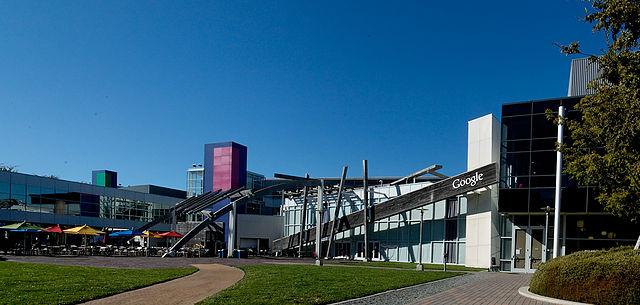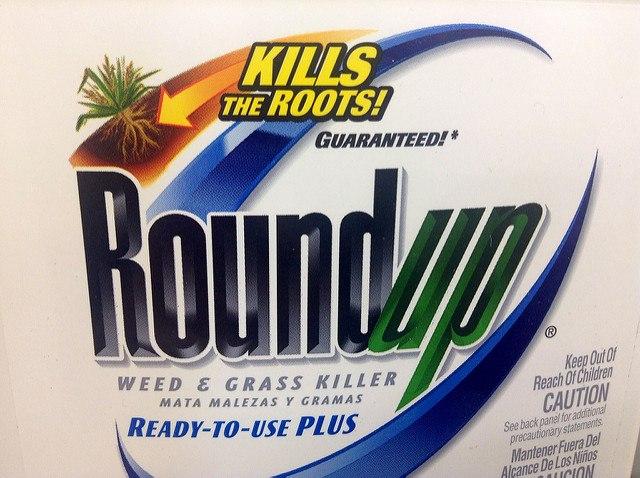How Ford Focus RS Smart Technology Impacts Sustainability


Nothing better explains how smart tech will reshape our lives than the Ford Focus RS.
This is a four-cylinder car, but it is excitingly fast and outrageously fun to drive. It is also the safest car I have ever driven. Even with supercar levels of horsepower, the EPA estimates the car gets 25 miles per gallon at highway speeds.
What the RS demonstrates is how smart tech enables fun and sales. Smart tech's commercial success path will also be how products contribute toward mitigating climate change.
Test-driving the RS at Ford’s Dearborn proving grounds
Ford invited me to test-drive the Focus RS at its proving grounds in Dearborn, Michigan. I welcomed the opportunity. Last year, Ford invited me to San Francisco to test-drive the Focus ST. The ST was the fastest Focus before Ford introduced this year’s RS. My San Francisco test-drive of the ST was a blast. The ST is fast, agile and a fun ride.
But the RS is the ST on steroids. Using smart tech, Ford created a 350-horsepower, street-legal rally sports car. The RS’s dynamic digital controls allow you to dial up four driving modes: fast, faster, fastest and RIDICULOUS!
How the RS’s smart tech makes a driver bulletproof
The RS’s smart tech improves even an average driver’s capabilities. In my first drive, I drove the RS like an ST. I had fun, but I was prudent in how I handled the car.
Ford provided a closed track for me to explore the RS’s potential. Company reps encouraged me to test the RS’s limits. So, I smashed the accelerator and challenged the track’s sharp curves to defeat the car (and me).
Never before had I approached sharp curves so fast. No worries with the RS. The brakes confidently but dramatically slowed the car. The smart tech that controls the RS’s four-wheel drive system delivered a quick flow through the curve. Next, I tried really screwing up. I mashed the accelerator during the curve. Again, the smart tech seamlessly made my acceleration work.
I then realized the dumbest thing in the RS was me. I was not smart enough, or talented enough, to overwhelm the RS’s technology. This is a car built to enable a safe result when a driver has to make a panic maneuver to avoid a deer or a poor decision by another driver.
The Stig shows me what the RS can really do
Ford then gave me a drive in the RS with professional race car driver Ben Collins. Ben is the Stig from Top Gear. What he did with that car was the greatest amusement ride I have ever experienced.
I tried doing a video interview of the ride. I got as far as Ben graciously introducing himself and explaining the car. Then he smashed the accelerator and I was holding on as G-forces whipped me inside the racing-inspired seats.
Here’s the 30 second video I did with Ben at the start of my thrilling ride:
After jamming me in my seat from straight-line acceleration, Ben then drifted the RS through a sharp curve. I have been to a drift car race and watched in awe. Now I was screaming with delight as the RS flew sideways through a curve. I had hardly wiped the huge grin from my face when Ben did it again through a second curve. And then a third. WHEW!
Then we raced toward a parking-lot sized area flooded with water. Ben launched onto the flooded lot at full speed and began doing figure-eights using controlled hydroplaning. Who knew you could control a hydroplaning car?
Next, I was stunned as he aggressively launched the RS off the flooded pavement and onto dry pavement. If I were driving I would have cautiously allowed the car to transition from slick to dry. But this is a smart car. It just flew off the flooded lot and onto the dry pavement with no loss of control. Just the opposite. Ben was in complete control and we were accelerating toward a banked track. OMG, OMG!
How smart tech fun could solve global warming
21st-century smart tech won't take 20th-century technology and make it better. The 20th century did not make the horse-based transportation system faster. It launched the automobile. The automobile was a mega sales success not because it was a better horse. It was so successful because it was more fun and enabling.
21st-century smart tech and sustainability are linked at the hip. Smart tech enables increased use of renewable energy. Smart tech uses less energy by being more efficient. (20th century tech gave us an underpowered Pinto rather than a Focus RS achieving both 350 horsepower and 25 MPG on the highway.)
I anticipate we will barely notice smart tech’s sustainability because our focus will be on how it is improving our daily activities. The Internet of Things will make us wonder how we survived living and working in dumb 20th-century homes and offices. Artificial intelligence (AI) will just “be there” like the air we breath. AI will assist us, enable us and protect us without us having to say the words Siri or Alexa.
For example, Ford RS’s smart technology is extensive, complex and invisible. The driver’s attention is not on the technology. It is on the fantastic driving experience. History may remember the RS as an early 21st-century example of smart tech’s ability to make life more fun and more sustainable.
And that is the promise of smart tech’s role in the Green Economic Revolution. Smart tech is fun. Fun sells. Smart tech holds the promise of driving sales success for more sustainable products that deliver both on fun and values.
Google’s Zero-Waste ‘Moonshot’ Could Inspire Other Tech Firms


When you are tops in the industry, everyone is gunning for you and trying to knock you down, and that is certainly the case with Google. The company is attacked on all fronts, from privacy issues to its autonomous cars. But from its clean energy projects to expanding internet access worldwide, there is no mistaking that the company is changing the world with its investments, technology and “moonshot” ventures. Now the Silicon Valley giant is hoping to shake up industry far beyond the tech sector with its tackling of waste at its data centers and across the company’s entire operations.
As announced last week by Jim Miller, Google’s vice president of global operations, the company is approaching waste diversion from both environmental and economic perspectives.
The company is starting with the foundation of its business, the data centers that the company runs across the globe. Those data centers, which send and store billions of Gmail messages, stream YouTube videos and upload and share documents for its 50 million or so Google Docs users, consume copious amounts of energy and generate more than their fair share of waste.
But Google says that despite the constant upgrades and new equipment, the vast majority of those servers at its data centers often have a second life. Miller claims just over half of the components implemented for upgrades were refurbished equipment, and over 2 million units were resold to other organizations. Any other parts that cannot be sold or reused are recycled – Google insists none of them goes to landfill. The company also says it is actively sharing how it accomplishes this with other companies who are interested in reducing their loads of electronic waste. Although the company has not made a specific deadline of what it expects to go fully zero-waste, Google six of its 14 data center sites send nothing to landfill, and globally 86 percent of all of their waste is reused or recycled. Incineration, says Miller, will only occur if there is no other viable option.
For Google, such a task should be relatively easy compared to other techies. Writing in Fortune, tech columnist Katie Fehrenbacher noted that Google manufactures its own servers and computing equipment. Not relying on other companies for hardware allows Google to design it the best way it works for the company – and allows for reduced waste as its procurement team is not bouncing back and forth between vendors.
But it is not just computer hardware where Google is looking to prevent waste. The company says it has allowed for more recycling options at its employee desks, and is aggressively tackling the challenge of food waste. The famous free Google cafes and micro-kitchens, which have fostered a bevy of theories why Google spends so much money on good grub, always pose a challenge to the company’s waste management goals. But in addition to standard tactics such as composting and food donations, the company says it is working on procuring food that can help eliminate waste far beyond Google’s operations. Coffee flour, that uses parts of the coffee plant otherwise discarded after the beans are harvested, is one ingredient. The use of more misshapen, or “ugly” fruits and vegetables, is also occurring in Google’s cafes.
At a time when more companies realize that slashing waste is better for the bottom line, Google’s ideas could inspire other companies to follow suit. Tech firms such the now split-in-two HP and Microsoft say they have built net-zero energy or alternative powered data centers, but have a long road ahead if their waste reduction efforts approach anything near what Google says it is accomplishing.
Image credit: Sebastian Bergmann/Wiki Commons
Investigation of Trump’s ‘Charity’ Results in More Bigotry


Donald Trump loves to brag about his businesses’ corporate philanthropy, although he refuses to disclose how that money is collected or spent. Unlike the vast majority of companies, which disclose how and how much they spend on charitable donations and community projects, Trump’s portfolio of businesses lacks transparency.
The evidence also suggests Trump's donations are more about his personal branding than doing good. Last week, New York Attorney General Eric Schneiderman launched an investigation into the Trump Foundation, the means by which The Donald fuels his political foundations. The result was a wave of anti-Semitic comments from the Republican candidate’s supporters.
The investigation stems from “troubling transactions that have recently come to light," Politico reported last week. Recent investigations, first by the Associated Press and then the Washington Post, allege the Trump Foundation broke Internal Revenue Service rules governing how nonprofits file paperwork. The AP investigation revealed that a $25,000 donation to Florida Attorney General Pam Bondi coincided with her office’s decision to drop an investigation of Trump University.
In previous litigation over Trump’s alleged real-estate training scam in California, the presidential candidate demanded the presiding judge step aside because he is “Mexican.” Both Trump and Bondi (rumored to be a gubernatorial candidate in Florida for 2018) denied any such deal has been made. And Trump reportedly paid a $2,500 penalty for making a political donation through a charitable foundation. But as the New York Times reported, denials of a quid pro quo are suspect. After all, Trump boasted throughout his campaign that he has been been able to use his largess to buy influence and access from politicians on both sides of the aisle.
But it is the investigation by the Post that reveals the shady nature of Trump’s charity. According to reporter David Fahrenthold, the Trump Foundation began accepting donations from others in 2001. By 2007, Trump was no longer donating any money to his own charity, but was accepting checks from individuals and foundations. Documents reveal that Trump spent $20,000 of the foundation’s money on a six-foot painting of himself – in violation of laws that prohibit citizens from using a nonprofit’s money to buy gifts for themselves.
Trump has a history of accepting donations to the foundation from other nonprofits, only to present those donations to organizations, including a South Florida police charity, as his own. Fahrenthold even suggested Trump has made money off of charitable events, with one example being the $276,463 fee the Palm Beach Police Foundation paid to rent his Mar-a-Lago estate in 2010. The bottom line is that a family-run charity is taking money from others, without donating any of Trump’s or family members’ own funds, and passing off those donations as its own.
Trump, notorious for going against Republican orthodoxy by litigating in order to get what he wants, is certainly not going to back down from these latest legal battles. Neither are his supporters, who incidentally have a history of making derogatory comments toward Jews. Since he announced his office’s investigation, Schneiderman says he has been the subject of anti-Semitic attacks, a story picked up by the New York Post. The paper endorsed George W. Bush for his re-election campaign in 2004 and Mitt Romney in 2012, but during this election, it has been stridently against Trump’s candidacy.
At a time when businesses go out of their way to be more inclusive, Trump's actions, and those of his supporters, make it clear the only ones welcome are those who agree with Trump's views -- and an opaque way of running an organization at any cost.
Image credit: Gage Skidmore/Flickr
Today’s Solar Sales Tactics are Misleading Homeowners


By Vikram Aggarwal
We all get them or know someone who has: unsolicited phone calls, online ads, even knocks on our doors from solar salespeople offering “free home solar panels” that can eliminate our electricity bills and save us money. Sounds great, right? Unfortunately, these hard-sell tactics are creating confusion and misleading homeowners about the true costs and benefits of going solar.
If you’re a homeowner considering solar, you’re not alone. Residential solar is experiencing extraordinary growth, a trend that’s expected to continue. In fact, the industry recently celebrated a critical milestone by reaching 1 million solar power installations in the U.S. It took 40 years to reach this mark, but thanks to falling prices and financial incentives, experts say it will only take two more years to hit 2 million installations.
Yet, despite all of this momentum, many homeowners still struggle to distinguish a good deal from just a good sales pitch. And as with other big-ticket purchases, an uninformed buyer is at greater risk to pay more for less. In fact, homeowners can overpay by $10,000 for a standard solar energy system. Many of the industry’s largest solar companies and lead generation services know this, and actively try to exploit unaware homeowners by relying on false advertising and deceptive sales tactics to fuel their growth.
Online solar ads are cause for concern
One look at today’s online solar ads and red flags should immediately go up.
Many of these ads come from online “lead generation” websites, rather than the solar installers themselves. These websites make money each time they sell your personal information to a solar installer and will actively promote inaccurate information that borders on breaking the FTC’s truth-in-advertising laws. For example, consider the popular “free solar panels from the government” pitch. The reality is there’s no government program that will give you free solar panels, and ads that say otherwise are simply distorting the truth to mislead homeowners.
Sales tactics like these aren’t new, nor is it unique to the solar industry. But when you consider how new solar technology is, and how little the average homeowner understands about the buying process, ads like this become all the more predatory and harmful. My advice? If the ad sounds too good to be true, it probably is.
Get the door, someone’s here to sell you solar
Of course you won’t need to fill out an online form to receive calls or even knocks at your door. Cold-calling and door-to-door sales pitches have been an important marketing tool for solar leasing companies like SolarCity and SunRun for years. It worked well in the early days of solar, but unfortunately it’s just become another way to push misleading information onto homeowners. To avoid this trap, here are the top three questions you should be asking:
1. Is a solar lease really the best way to go solar? More often than not, the answer is no, but since leases are the most profitable solar financing option for big solar installers to sell, it’s what they’ll push hardest onto homeowners. In fact, it’s how many of the top solar installers in the U.S. (particularly SolarCity) got so big. However, consumers are realizing that system ownership provides much more value, which leads me to the next question.
2. Why does buying my solar panels seem so expensive? To help persuade homeowners into signing their lease, some solar companies will drastically inflate the costs of buying solar panels from them – usually by thousands of dollars – which can make the lease look like the better deal. Yet with the increasing availability of $0-down solar loans, consumers that lack the cash for an upfront purchase are increasingly selecting system ownership – and rightfully so.
3. If I like what I hear, should I sign same-day? A face-to-face sales pitch is an opportunity for sales teams to walk away with your signature. They don’t want homeowners comparing offers from multiple installers because there’s a good chance they’ll lose your business. If you’re inclined to sign that day, keep in mind that you’re very likely find a better deal by shopping around – even if they offer you a cash rebate to sign up on the spot.
Solar knowledge is power
As with any large household purchase, homeowners should arm themselves with as much unbiased information as possible before selecting a contractor. Checking company reviews on sites like the Better Business Bureau, or comparing multiple quotes on sites like EnergySage, can help ensure that homeowners make a well-informed solar purchase. With the support of the U.S. Department of Energy, we built EnergySage for the sole purpose of helping homeowners better understand and comparison-shop for solar.
By taking these steps, homeowners will be better suited to spot a questionable sales pitch and feel more confident in their final decision – good news for consumers and for the solar industry.
Image courtesy of the author
Vikram Aggarwal is the CEO of EnergySage, the country’s largest online marketplace for solar. EnergySage allows consumers to easily request and compare competing installation quotes online. Vikram founded EnergySage after more than 15 years of with Fidelity Investments. He holds an MBA from the D’Amore-McKim School of Business at Northeastern University, and is a CFA Charterholder.
Business vs. The State: new roles for social action


Minister calls for action, business says yes!


3p Weekend: Your Cheat Sheet to the Dakota Access Pipeline Conflict


With a busy week behind you and the weekend within reach, there’s no shame in taking things a bit easy on Friday afternoon. With this in mind, every Friday TriplePundit will give you an easy read on a topic you care about. So, take a break from those endless email threads and spend five minutes catching up on the latest trends in sustainability and business.
The big news item this month is the ongoing dispute over the controversial Dakota Access pipeline. Green Party presidential candidate Jill Stein called the conflict "one of the defining climate justice fights in the United States." But many Americans still aren't sure what all the fuss is about.
Don't want to be the last one to get the skinny on the story? We've got you covered. Read on for the need-to-knows.
What is the Dakota Access Pipeline?
The planned Dakota Access pipeline would extend 1,168 miles across North Dakota, South Dakota, Iowa and Illinois. Energy Transfer Partners and its subsidiary, Dakota Access LLC, plan to complete the pipeline by the end of this year at a cost of $3.8 billion. In 2015, they acquired permits from the U.S. Army Corps of Engineers to cross jurisdictional waters, and from the respective state public utility agencies to construct the project.
The companies' stated purpose is to carry crude oil from the Bakken oil fields of northwest North Dakota to a hub in Patoka, Illinois. Once completed, the pipeline will have a transportation capacity of over 450,000 barrels a day, according to Dakota Access.
What's the benefit?
"The goal in building this pipeline is to move that crude oil to domestic refineries more safely and at a lower cost than the current alternatives," says Dakota Access. Dubious grammar aside (more safely?), environmental advocates say the company hasn't done enough to show a public need for the pipeline that would justify potential risks to water resources or infringement on land rights.
A 2014 study commissioned by Dakota Access touts the economic and employment benefits of the project -- saying it will generate $1.9 billion in labor income and $5 billion in production and sales in the four states.
Iowa State University economist Dave Swenson told the Des Moines Register he suspects some of the numbers were overstated. (With a company report of this kind, that's no surprise.) And while he acknowledged employment and economic activity will increase in his state, he underscored that it won't last long. "They don’t hang around," he told the paper on Thursday.
For now, construction workers are clocking 12- to 14-hour days, seven days a week, to complete the four-state pipeline by winter. And they're reportedly earning a good living -- with hourly wages ranging from $21 to $53, plus benefits, overtime and per diem pay, reports the Des Moines Register.
What's the conflict?
More economic activity and more jobs? What could be the problem? As it turns out, a whole lot.
For starters, the planned pipeline would pass within just half a mile of the Standing Rock Sioux reservation in North Dakota. Native American tribes and their allies say this close proximity would put sacred sites at risk and pose a threat to the tribe’s drinking water in the event of a spill.
The Missouri River supplies drinking water to 17 million Americans, including the Standing Rock Sioux. In addition to water risk, environmental advocates balk at the idea of spending billions on new oil infrastructure when climate scientists say we need to keep the majority of our reserves in the ground.
The Standing Rock Sioux opposed the pipeline from the start. In 2014, the tribe began to form organized protests -- which rapidly grew as pipeline construction neared the reservation this summer. Representatives of more than 280 Native American tribes have now participated in the occupation, Green Party presidential candidate Jill Stein wrote in an op/ed on the Hill. Thousands more, including Stein and her running-mate Ajamu Baraka, joined the tribes in solidarity and in opposition to the project.
Native American tribes and environmentalists aren't the only stakeholders upset over the project. Land owners across the four affected states fought against Dakota Access for its use of eminent domain to build on their land without consent, to little avail, reports the Des Moines Register.
Tensions reach a boiling point over the Labor Day weekend
The Saturday before Labor Day, the Standing Rock Sioux tribe issued a statement saying building crews destroyed “[sacred] places containing ancient burial sites, places of prayer and other significant cultural artifacts."
The tribe had already filed suit against the Army Corps of Engineers to stay the project. And the demolition came only a few days ahead of a decision by the courts, leading advocates to say the desecration of burial grounds was meant to silence opposition and stop the protests. "They came in on a holiday weekend and destroyed the site,” said the tribe's attorney, Jan Hasselman.
Following the demolition, tensions between protesters and pipeline workers reached a fever pitch. Reports emerged of company security guards using pepper spray and attack dogs on protesters, and injuries were reported on both sides.
VIDEO Dakota Access Pipeline Co Attacks Native American Protesters with Dogs & Pepper Spray https://t.co/opaGFmyLxj pic.twitter.com/uXfFAxKkej
— Democracy Now! (@democracynow) September 4, 2016
The long-running independent news program Democracy Now! was one of only a few media outlets present, but its coverage quickly caused a media windfall. The program's footage of the protests was rebroadcast across popular outlets including CBS, NBC and CNN -- bringing the conflict to the national spotlight.
High-profile arrests draw attention
Dozens were arrested as protests unfolded in North Dakota. And those who chained themselves to equipment may even face felony charges, according to local news outlets.
But heads really started turning last Thursday, when Morton County, North Dakota, issued an arrest warrant for Democracy Now! host Amy Goodman. The charge -- criminal trespass, a misdemeanor offense -- stemmed from the program's coverage in North Dakota over the Labor Day weekend.
Baher Azmy, legal director for the Center for Constitutional Rights said: "This is clearly a violation of the First Amendment … an attempt to repress this important political movement by silencing media coverage."
The same county also issued arrest warrants for Jill Stein and her running-mate, Ajamu Baraka.
So, where does the pipeline stand now?
Last Friday, a federal judge denied the Standing Rock Sioux's request for injunction to halt construction on the pipeline. But moments later, the Obama administration took action.
In a statement released Friday afternoon, the Departments of Justice, Army and Interior halted construction on the pipeline and called for national reform to “ensure meaningful tribal input” on infrastructure projects. Dave Archambault II, chairman of the Standing Rock Sioux Tribe, was elated.
“Our hearts are full. This an historic day for the Standing Rock Sioux Tribe and for tribes across the nation,” he said in a statement via Earth Justice, which represents the tribe alongside Hasselman. "Native peoples have suffered generations of broken promises, and today the federal government said that national reform is needed to better ensure that tribes have a voice on infrastructure projects like this pipeline.”
Kelcy Warren, CEO of Energy Transfer Partners, was far less pleased. In a statement released four days after the stay, Warren called concerns about water risks "unfounded" and said "multiple archaeological studies" found "no sacred items" along the pipeline route. "However," he continued, "misinformation has dominated the news, so we will work to communicate with the government and media more clearly in the days to come." He also asked supporters of the project to contact their representatives to get construction going again. You can read his full statement at Valley News Live.
Despite Warren's claims, advocates remain confident in a desirable outcome for the Standing Rock Sioux. "The Corps never considered the cumulative impacts of this massive project, nor was there any examination of whether there is any public need for this pipeline that may justify its risks," Daniel E. Estrin, general counsel and legal director for Waterkeeper Alliance, told TriplePundit in an email.
"We expect after good-faith reconsideration by the agencies that the Corps will, at a minimum, (1) require Dakota Access to apply for individual Clean Water Act section 404 permits; and (2) withdraw its Finding of No Significant Impact and require the preparation of a full environmental impact statement" for the project.
How this will all play out remains to be seen. TriplePundit will continue to follow the story as it develops.
Image credits: 1) 2) and 3) courtesy of Joe Brusky via Flickr
Virgin Atlantic: Emissions from Steel Mills Could Fuel Airplanes


After five years of research and development, Virgin Atlantic and one of its clean-technology partners, Illinois-based LanzaTech, developed a source of jet fuel made of waste gases from steel mills. According to the companies, this new source of jet fuel passed extensive tests that both delivered on performance and promise to result in carbon emissions savings of 65 percent compared to conventional jet fuel.
This discovery comes at a time when airlines, seeking to mitigate what is a carbon-intensive business, have long dabbled with jet fuel blended with algae and other biofuels. The Dutch carrier KLM experimented with algae fuel blends, has flown transatlantic flights using blends of kerosene and cooking oil, and is still apparently committed to sourcing these fuels when available. Alaska Airlines also considered using recycled cooking oil to reduce its carbon emissions. Earlier this year, United kicked off flights between San Francisco and Los Angeles using a biofuel-conventional blend. Aviation fuel using feedstock from Brazilian sugarcane is also touted as an option.
But the problem with the development of more sustainable jet fuel boils down to one word: scale. A blend of 5, 10 or even 50 percent sounds impressive. But airlines are still struggling to get a seat on the carbon-reduction bandwagon – and air travel is still on the rise worldwide. The struggle with expanding capacity for fuels such as algae-based oils is one reason why one giant in the industry, Solazyme, transitioned away from a focus on biofuels, rebranded itself as TerraVia, and now sees foods made from algae as its cash cow.
Virgin Atlantic and LanzaTech suggest they have a more scaleable option. LanzaTech’s process involves capturing carbon monoxide gas from steel mills and other carbon-intensive industries. That carbon monoxide is then collected and fermented into alcohol, which can eventually be transformed into ethanol feedstock. The companies say each gallon of that ethanol can be converted into a half gallon of jet fuel, while reducing emissions from steel mills by up to a third.
Some say this does not really solve the carbon emissions problem, as emissions from one dirty industry are simply collected and burned off by another. But LanzaTech estimates that 15 billion gallons of jet fuel could be produced should this technology scale, enough to meet almost 20 percent of the global aviation industry’s fuel requirements.
The first phase generated 1,500 gallons of jet fuel. To put those numbers in context, a Boeing 747 consumes 1 gallon of fuel per second. (Do the math and compare airplane vs. automobile mileage, and you could argue that flying by air is more efficient than driving by car given the number of passengers.) So, we are still left with that pesky question of scale, as this is only enough fuel to fly a puddle jumper from a Central Valley town to a larger California air hub.
Nevertheless, innovation by the likes of Virgin Atlantic and LanzaTech is more than just being “sustainable” or wowing stakeholders. This is another step as scientists and entrepreneurs find ways to create fuel that has is more efficient and with a reduced impact on the planet.
Image credit: Mark Harkin/Flickr
Obama Establishes First Marine Monument in the Atlantic Ocean


On Thursday, President Barack Obama established the first U.S. marine monument in Atlantic waters. The Northeast Canyons and Seamounts Marine National Monument, 130 miles off the coast of Cape Cod, is about the size of the state of Connecticut. The area, which includes underground mountain ranges and three underwater canyons deeper than the Grand Canyon, is home to dozens of rare and endangered species, from corals to whales to sea turtles.
Obama’s announcement, made at the annual Our Ocean Conference in Washington, D.C. hosted by Secretary of State John Kerry, promises to help protect marine life, ensure sustainable fisheries and help hedge against climate change risks. In addition to this new U.S. marine monument, several countries attending the conference made commitments to create or expand protected marine areas, including Cambodia, Costa Rica, Lebanon and Seychelles.
The announcement comes a month after President Obama announced the expansion of the Papahānaumokuākea Marine National Monument, which surrounds Hawaii’s northwestern atolls. This latest monument is another step for Obama in strengthening his environmental legacy with little more than four months left in his administration. “We cannot truly protect our planet without protecting our oceans,” the president said as he explained why he agreed to set aside the area for protection.
Only about 3 percent of the world’s oceans fall under government protection for conservation purposes, estimates suggest. Many scientists insist the amount of conserved ocean areas must increase to 30 percent worldwide in order to to protect biodiversity, allow ecosystems to recover from overfishing, and groom sustainable development for citizens who rely on the oceans for their way of life. To that end, the United Nations’ Convention on Biodiversity is pushing to conserve 10 percent of the world’s oceans by the end of this decade.
According to the White House, U.S. leadership on ocean protection is motivating other countries to follow suit. The 20 countries announcing similar measures during this week’s conference will lead to an additional 900,000 square miles of ocean now under protection – an increase from 730,000 square miles last year.
This new monument is not without controversy. Republicans and energy industry leaders will be unhappy that oil and gas exploration is immediately banned from the region. New England seafood companies also oppose the designation of this area as a monument, with one crab company describing it as a “big blow.” And the Atlantic Offshore Lobsterman’s Association accused the president of abusing his power and throwing fisherman and crews out of work.
But growing demand for seafood such as lobster is straining fisheries across the world, and prices are soaring as demands for these exports are on the rise. The Obama administration says it is sensitive to the fishing industry's concerns, as the size of the monument is smaller than requested by Connecticut’s congressional delegation.
For decades, businesses got what they wanted from Washington. Allowing scientists to have a seat at the table when it comes to how we manage our lands and oceans allows them to study the risks posed by climate change – and can help the seafood industry survive in the long run.
“One of the reasons I ran for president was to make sure that America does our part to protect our planet for future generations,” President Obama said at the Our Oceans Conference. “And I am very proud that America has become a global leader in the fight against climate change.”
Image credit: USFWS/Flickr
What Will the Monsanto-Bayer Merger Mean to Us?


This week we saw big news in the world of Big Ag: The American GMO giant Monsanto agreed to be acquired by Bayer AG. The deal was variously reported as valued between $56 billion and $66 billion. So much has been written about these two companies that it’s hard to know where to begin in discussing the deal.
For starters, I think it’s safe to say that for a large number of people around the world, Monsanto would not be missed. While the company could be considered successful enough to be worth billions to a buyer, it also succeeded in becoming one of the most hated companies of all time. This is largely due to its penchant for producing dangerous and controversial substances, ranging from PCBs, to dioxin, Agent Orange, DDT, rBGH, polystyrene, aspartame, the glyphosate herbicide known commercially as Roundup, and the genetically-modified crops that were designed to increase its use.
Add the fact that the company made little distinction between marketing and bullying in its business practices, suing both critics and farmers in highly aggressive enforcement of its intellectual property and suppress criticism. The company also cut vast inroads into the federal government, placing its people in crucial oversight positions ranging from the FDA to the Supreme Court and leveraging those positions to strong-arm policies that were tailor-made to its liking.
Monsanto is not going away. It will simply be absorbed by Bayer, which will likely strengthen the biotechnology company. Details of the new company structure are not yet available
The buyer, Bayer AG, is a much larger and more diverse enterprise, perhaps best known for its over-the-counter healthcare products such as aspirin, Alka-Seltzer and One A Day vitamins. However, Bayer also has a sizable business in agricultural chemicals and is a huge supplier of commercial plastics. Its plastics division, Bayer Material Science (which was recently spun off and renamed Covestro), was a major supporter of the Solar Impulse program -- providing lightweight structural and insulating materials to enable the aircraft to reach its performance targets. The merger, if approved, would make the agricultural chemical division Bayer's largest.
Bayer is no stranger to controversy either. In its long history (the company was founded in 1863), it produced heroin in 1898, when it was still legal, and had strong and nefarious ties to the Nazi regime in WWII. (Its CEO publicly apologized to Elie Wiesel in 1995 for the company's involvement in the Holocaust.) Most recently, Bayer’s production of neonicotinoid pesticides -- which some linked to massive bee die-offs -- has come under fire. Not only has the company diverted attention by shifting blame to the varroa mite, which it claims is responsible for the bee deaths, but it also sued the watchdog group BUND, a German branch of Friends of the Earth, in an effort to silence criticism.
This proposed mega-deal could be the most controversial yet. Given the recent mergers between DuPont and Dow Chemical, and between Sygenta and the China National Chemical Corp., if approved the merger will reduce the number of companies controlling the inputs to the global food supply from seven down to four. This lack of diversity in seed stock will make the food system more vulnerable to diseases or other unforeseen events.
The combined Bayer-Monsanto company will own more than 30 percent of the global seed market. That means it would control, for example, the inputs for 70 percent of the U.S. cotton crop. Reduced competition will likely lead to higher prices, putting a strain on both consumers and farmers. Use of genetic engineering in foods and other crops will likely increase. Consumers will find less choices in the supermarket and innovation in areas other than those profitable to the company will likely be squashed.
Two former Justice Department officials, Maurice E. Stucke and Allen P. Grunes, claim the merger would violate anti-trust laws. Given their concerns, which mirror those cited above, the pair insists "the antitrust enforcers must not allow this merger to proceed."
More than 500,000 people already signed a petition to block the approval.
Speaking of all these proposed mergers, Food & Water Watch Executive Director Wenonah Hauter said: "The shocking consolidation in the biotech seed and agrochemical industry turns over the food system to a cabal of chemical companies that would make it even harder for farmers, consumers and communities to build a vibrant, sustainable food system."
The food industry, apparently in imitation of the banking industry, is approaching the too-big-to-fail point, when it will become too late for even the government to control their behavior, their risks, and their determination to shift the objective of the global food supply system from that of providing nutrition to that of maximizing profit. Does anyone out there, besides perhaps their major investors, actually think this will make the world a better place to live?
Image credit: Mike Mozart: Flickr Creative Commons